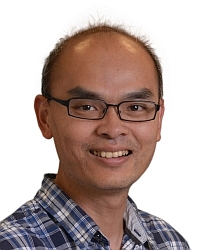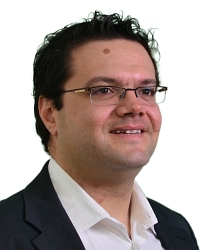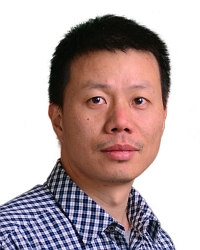TR2025-048
Time-optimal single-scalar control on a qubit of unitary dynamics
-
- , "Time-optimal single-scalar control on a qubit of unitary dynamics", Physical Review, DOI: 10.1103/PhysRevA.111.042602, Vol. 111, No. 4, pp. 042602, April 2025.BibTeX TR2025-048 PDF
- @article{Lin2025apr2,
- author = {Lin, Chungwei and Boufounos, Petros T. and Ma, Yanting and Wang, Yebin and Ding, Qi and Sels, Dries and Chien, Chih-Chun},
- title = {{Time-optimal single-scalar control on a qubit of unitary dynamics}},
- journal = {Physical Review},
- year = 2025,
- volume = 111,
- number = 4,
- pages = 042602,
- month = apr,
- doi = {10.1103/PhysRevA.111.042602},
- url = {https://www.merl.com/publications/TR2025-048}
- }
- , "Time-optimal single-scalar control on a qubit of unitary dynamics", Physical Review, DOI: 10.1103/PhysRevA.111.042602, Vol. 111, No. 4, pp. 042602, April 2025.
-
MERL Contacts:
-
Research Areas:
Abstract:
Optimal control theory is applied to analyze the time-optimal solution with a single scalar control knob in a two-level quantum system without quantum decoherence. Emphasis is placed on the dependence on the maximum control strength umax. General constraints on the optimal protocol are derived and used to rigorously parameterize the time-optimal solution. Two concrete problems are investigated. For generic state preparation problems, both multiple bang-bang and bang-singular- bang are legitimate and should be considered. Generally, the optimal is bang-bang for small umax, and there exists a state-dependent critical amplitude above which singular control emerges. For the X-gate operation of a qubit, the optimal protocol is exclusively multiple bang-bang. The minimum gate time is about 80% of that based on the resonant Rabi π-pulse over a wide range of control strength; in the umax → 0 limit this ratio is derived to be π/4. To develop practically feasible protocols, we present methods to smooth the abrupt changes in the bang-bang control while preserving perfect gate fidelity. The presence of bang-bang segments in the time-optimal protocol indicates that the high-frequency components and a full calculation (instead of the commonly adopted Rotating Wave Approximation) are essential for the ultimate quantum speed limit.



